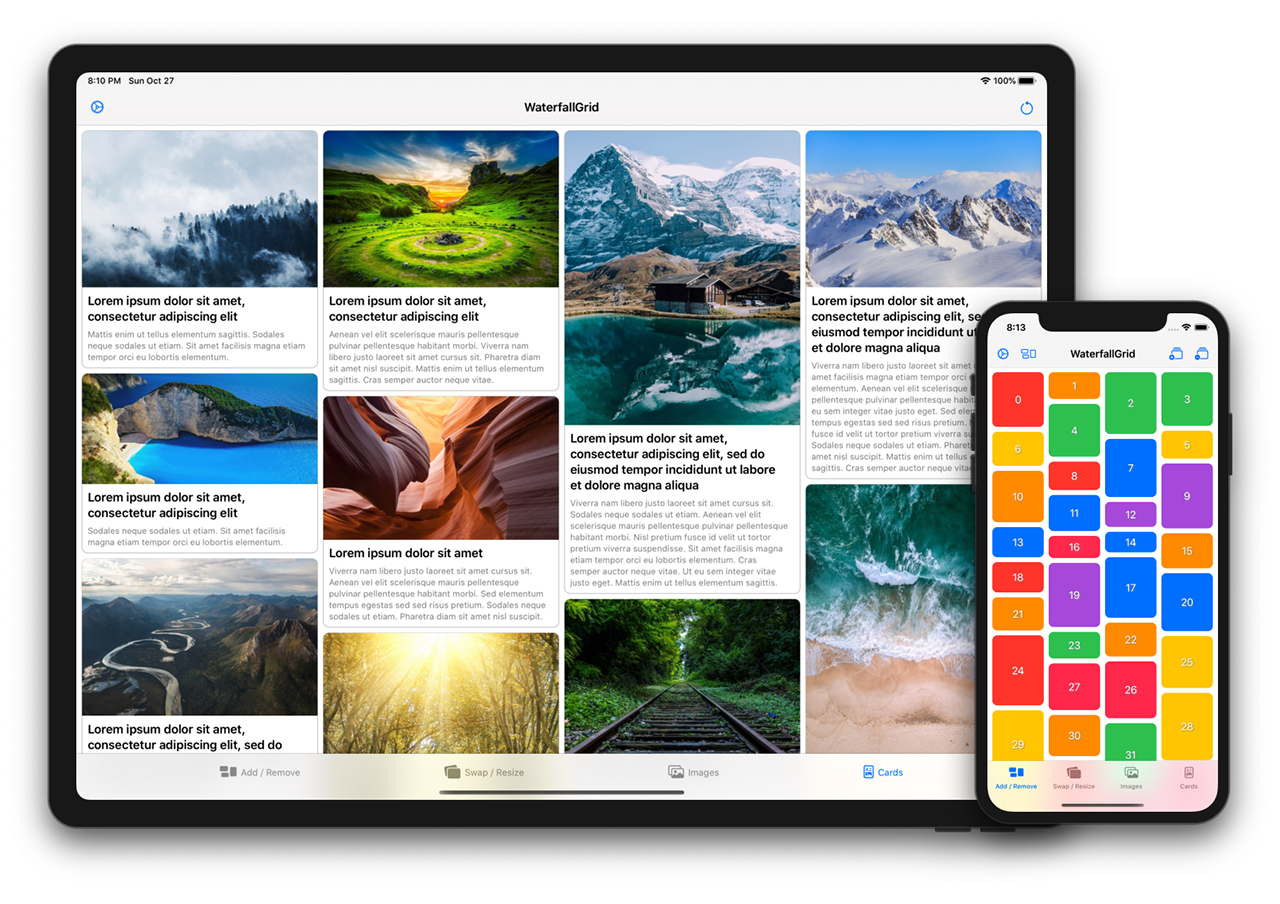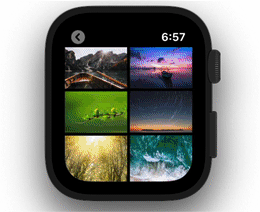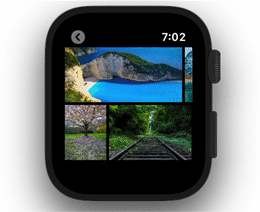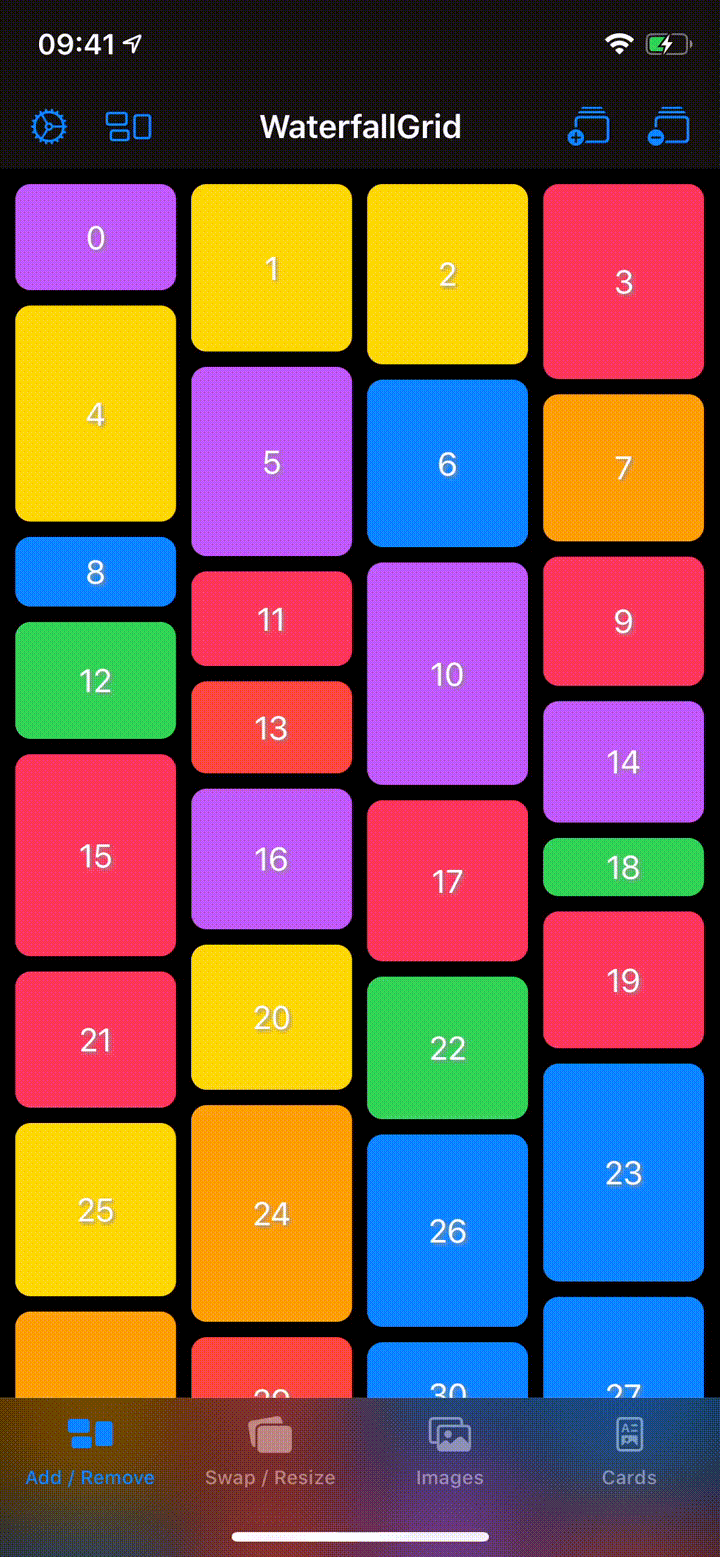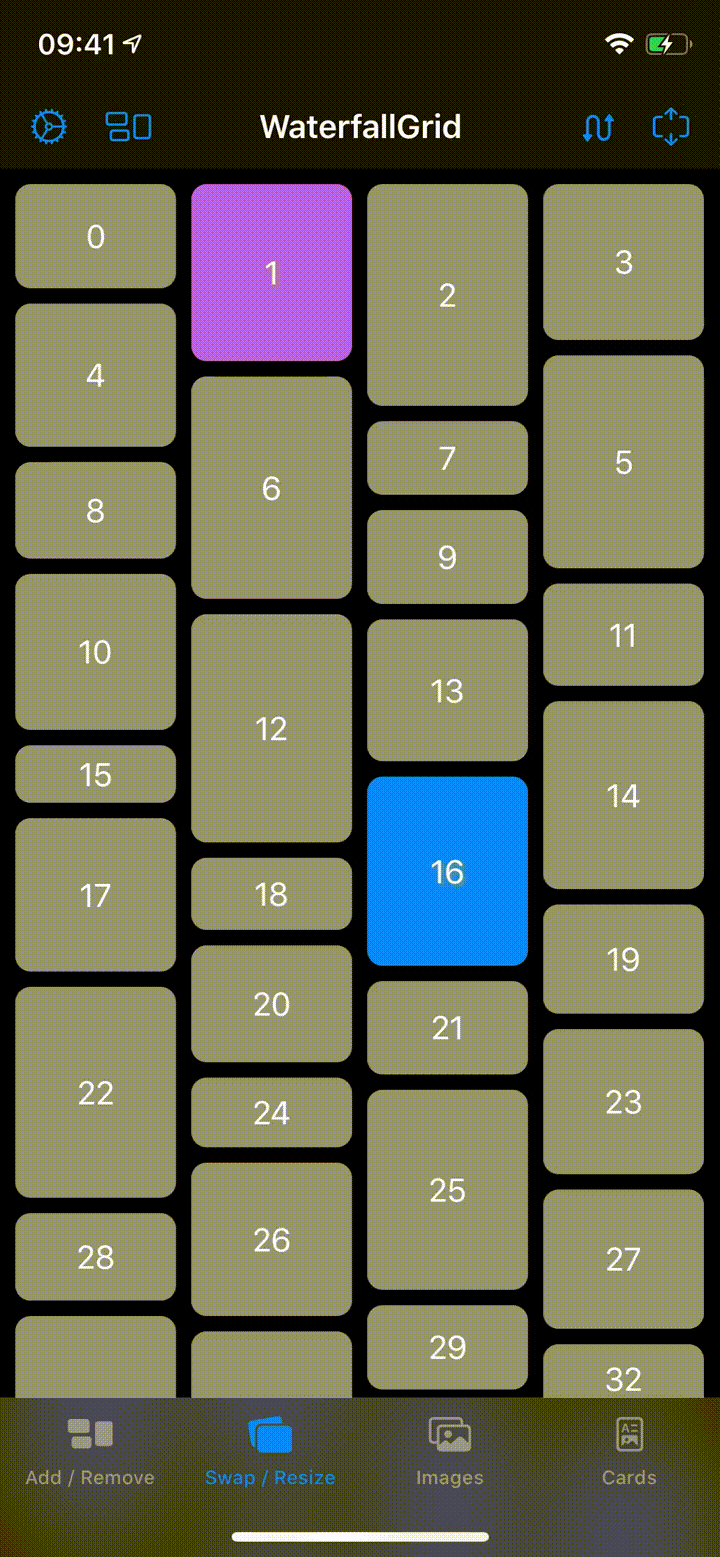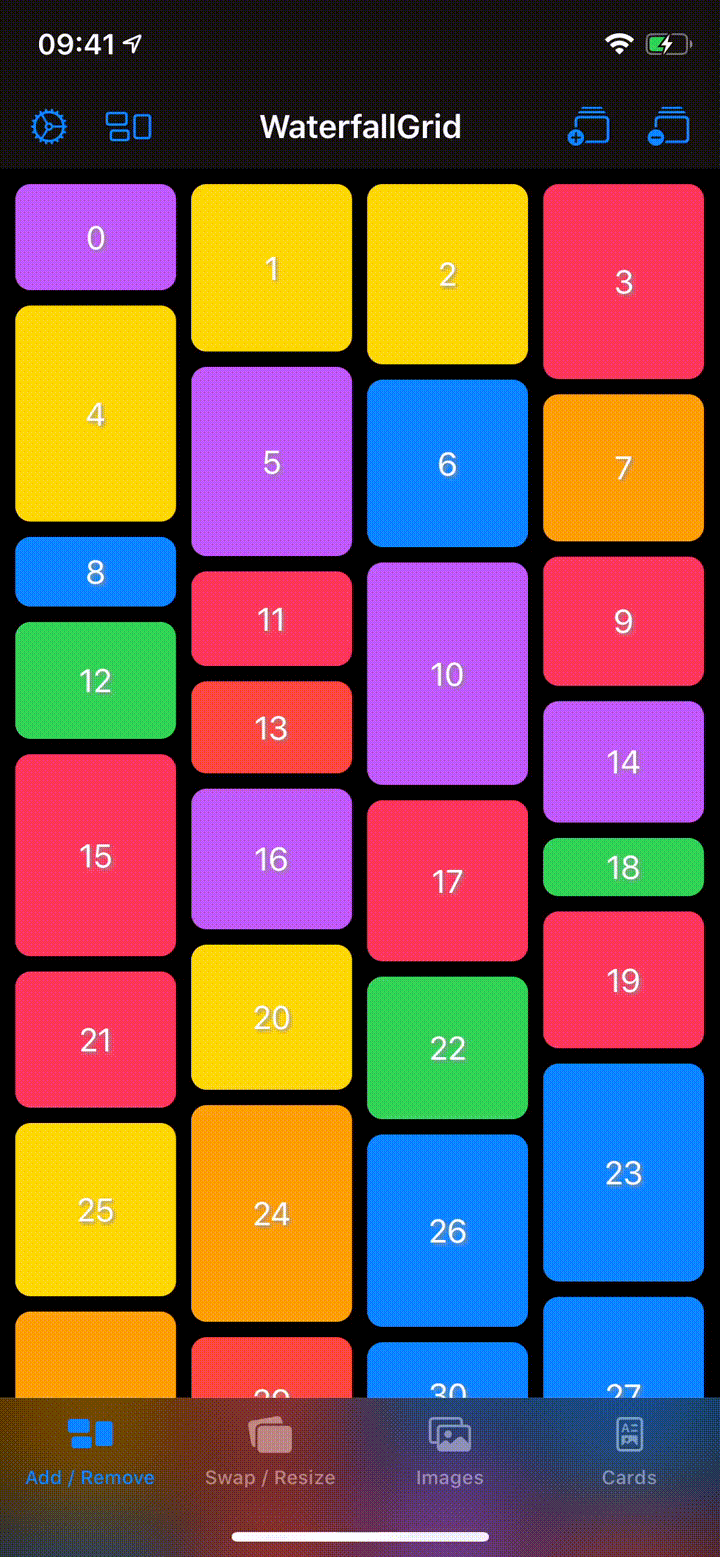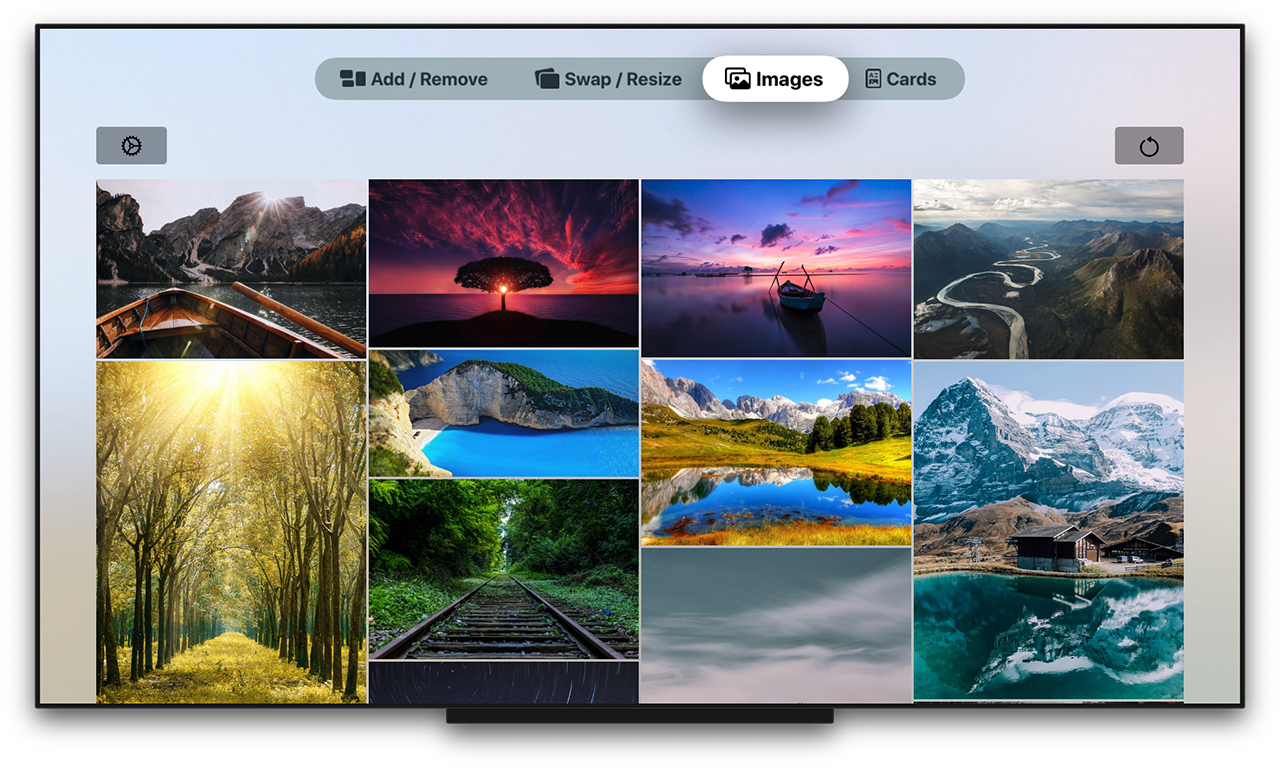- August 28, 2025
- Mins Read
- July 17, 2025
A waterfall grid layout view for SwiftUI.
Features
- Irregular grid of content.
- Columns number different per device orientation.
- Spacing and grid padding customizable.
- Horizontal or vertical scroll direction.
- Items update can be animated.
Usage
Initialization
You can create a grid that displays the elements of collection by passing your collection of data and a closure that provides a view for each element in the collection. The grid transforms each element in the collection into a child view by using the supplied closure.
WaterfallGrid works with identifiable data (like SwiftUI.List). You can make your data identifiable in one of two ways: by passing along with your data a key path to a property that uniquely identifies each element, or by making your data type conform to the Identifiable protocol.
Example 1
A grid of views of type Image from a collection of data identified by a key path.
WaterfallGrid((0..<10), id: \.self) { index in
Image(“image\(index)”)
.resizable()
.aspectRatio(contentMode: .fit)
}
Example 2
A grid of views of type RectangleView from a collection of Identifiable data.
WaterfallGrid(rectangles) { rectangle in
RectangleView(rectangle: rectangle)
}
or, for simple cases like this, just:
WaterfallGrid(rectangles, content: RectangleView.init)
Grid Style
To customise the appearance of the grid call the gridStyle function and pass the parameters you want to customise.
Columns
WaterfallGrid(cards) { card in
CardView(card: card)
}
.gridStyle(columns: 2)
WaterfallGrid(cards, content: CardView.init)
.gridStyle(
columnsInPortrait: 2,
columnsInLandscape: 3
)
Spacing and Padding
WaterfallGrid(rectangles, content: RectangleView.init)
.gridStyle(spacing: 8)
.padding(EdgeInsets(top: 16, leading: 8, bottom: 16, trailing: 8))
Animation
WaterfallGrid(rectangles, content: RectangleView.init)
.gridStyle(animation: .easeInOut(duration: 0.5))
Scroll Behaviour
Embed in ScrollView & Indicators option
ScrollView(showsIndicators: true) {
WaterfallGrid(rectangles, content: RectangleView.init)
}
Horizontal Scroll Direction
ScrollView(.horizontal) {
WaterfallGrid(rectangles, content: RectangleView.init)
.scrollOptions(direction: .horizontal)
}
A Complete Example
ScrollView(.horizontal, showsIndicators: false) {
WaterfallGrid(cards) { card in
CardView(card: card)
}
.gridStyle(
columnsInPortrait: 2,
columnsInLandscape: 3,
spacing: 8,
animation: .easeInOut(duration: 0.5)
)
.scrollOptions(direction: .horizontal)
.padding(EdgeInsets(top: 16, leading: 8, bottom: 16, trailing: 8))
}
Sample App
Explore the WaterfallGridSample app for some more detailed and interactive examples.
Installation
Swift Package Manager
App dependency
select File > Swift Packages > Add Package Dependency and enter the repository URL (Adding Package Dependencies to Your App)
Package dependency
Add it as a dependency within your Package.swift manifest:
dependencies: [
.package(url: “https://github.com/paololeonardi/WaterfallGrid.git”, from: “1.1.0”)
]
CocoaPods
You can install WaterfallGrid via CocoaPods by adding the following line to your Podfile:
pod ‘WaterfallGrid’, ‘~> 1.1.0’
Run the pod install command to download the library and integrate it into your Xcode project.
GitHub
- August 27, 2025
- SwiftUI
This package provides you with an easy way to show tooltips over any SwiftUI view, since Apple does not provide ...
- August 27, 2025
- SwiftUI
- Uncategorized
SimpleToast is a simple, lightweight, flexible and easy to use library to show toasts / popup notifications inside iOS or ...
- August 27, 2025
- SwiftUI
Create Toast Views with Minimal Effort in SwiftUI Using SSToastMessage. SSToastMessage enables you to effortlessly add toast notifications, alerts, and ...

